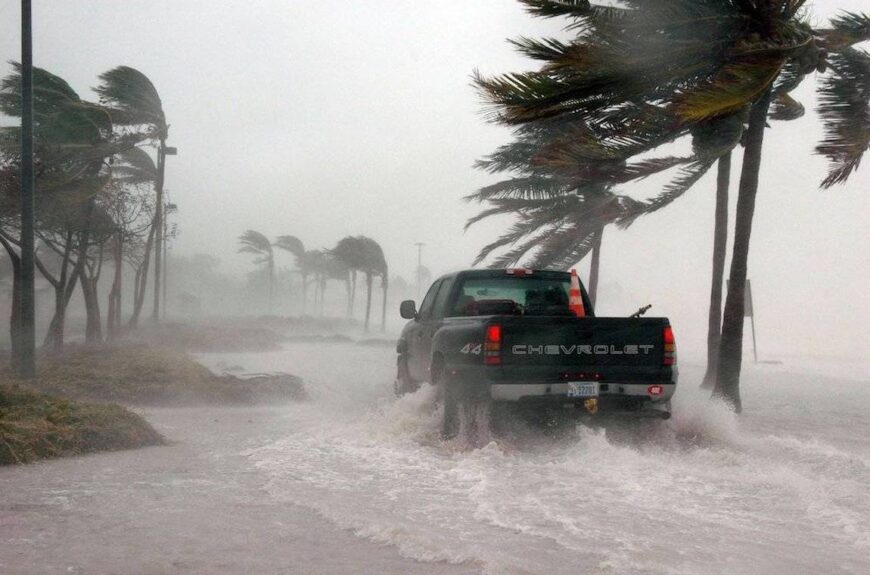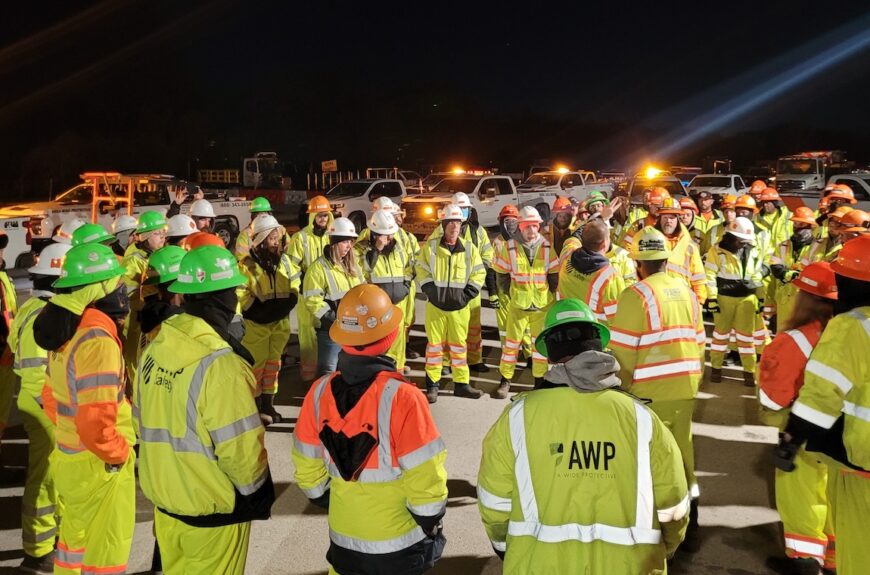
AWP Summer Storm Season Prep
Summer storm season is here again – and again, Area Wide Protective crews are ready to go where they’re needed to help provide traffic management and safety services for the utility crews and contractors performing storm damage restoration work. As familiar as they are with protecting utility workers doing pole replacements, line repairs and other work, those familiar assignments can feel very different in a storm restoration situation.
Providing Traffic Control Services When the Weather’s Out of Control
Because of the unpredictable nature of storms, major utility companies and contractors often contact AWP before a hurricane makes landfall, requesting help with storm restoration efforts when the storm is still in progress. The contractors and utility managers may have a good idea of how many crews they’ll need, but not exactly where they’ll be needed, said Fran Gleason, Regional Manager. In other words, AWP Protectors need to be ready for a wide variety of work on short notice – even if they don’t know quite what that work will entail.
“At the time they’re requested, they usually get only a general idea of what they’ll be getting into at the time they’re called,” Gleason explained.
“They may be called to go to Florida, then re-directed to Georgia, then the Carolinas,” he said. The utilities determine the number of crews and type of equipment they’ll need as damage assessments are made. Protectors assigned to storm restoration and cleanup efforts need to prepared to handle a wide array of traffic control setups, Gleason said, and should also expect to deal with a lot of fluidity in the process.
“During one storm, we had 50 crews from all over the Midwest, mostly from Indiana and Ohio, positioned in Georgia waiting for a storm to hit in Florida,” Gleason recalled. “Then the storm moved to North Carolina.” For a while, those crews camped out at Charlotte Speedway, he said.
“When our Protectors arrive at ‘Base Camp,’ they’ll get a better idea of what to expect,” Gleason said, although sometimes, AWP Protectors are among the first ones there, arriving to help establish the camp for incoming crews, setting up the initial traffic plans to allow dozens or hundreds of trucks and other work vehicles to move efficiently and safely in and out of the camp.
Managing Relief and Restoration Crew Traffic at Base Camp and Wide Area of Work Sites
Generally, Gleason tells Protectors “not to expect the best conditions” when doing storm restoration work. Crews often sleep in large tents or trailers, and they may have unusually long commutes, as camps may be far outside the primary damage area.
While accommodations may not be “the best,” Gleason said, “The utilities do a good job with base camp setup. They always have a lot of food and water for crews,” with food available throughout the days. And those can be very long days.
With dozens or hundreds of utility trucks also at the base camp, a Protector’s day might start with directing traffic out of the camp, and end long after dark, after directing returning utility crews back into camp. Protectors can usually expect to work 12- and 14-hour days, he said. On the heels of a major storm, weather conditions usually aren’t the best, either.
“Whether it’s wind, snow or ice, hurricanes, we can have rising waters,” Gleason said. Weather conditions are one reason the situation is different from the usual, and one reason that when setting up the teams, he said, “we look at experience.”
“The job itself involves dealing with a lot of destruction,” he said. “They know what they need to do when setting up a zone, but it’s a different atmosphere, mentally,” and sometimes physically, he said.
Gleason said the most important thing in restoration work is for everyone to be communicating as a group as much as possible.
Communication Key for Crews, Management During Storm Restoration Work
While initial requests for crews often come from a utility provider regional or division manager to a local or Regional Manager with AWP, from that point forward, communication is streamlined so that a crew chief or foreman with the utility is able to communicate with one designated AWP manager to deploy 50 to 100 people in 2-person crews.
Communication is one of the manager’s most important jobs in storm restoration assignments, providing unified direction for crews and a primary point of contact for customers.
Protectors learn a lot in a storm assignment, he said, and while some of it is practical on-site experience, Gleason said, Protectors also learn how much they’re appreciated by the utility workers and contractors, too.
“There’s a lot of communication between crews. A bond is formed, between the Protectors, utility workers, foremen, and everyone on the job,” he said.



